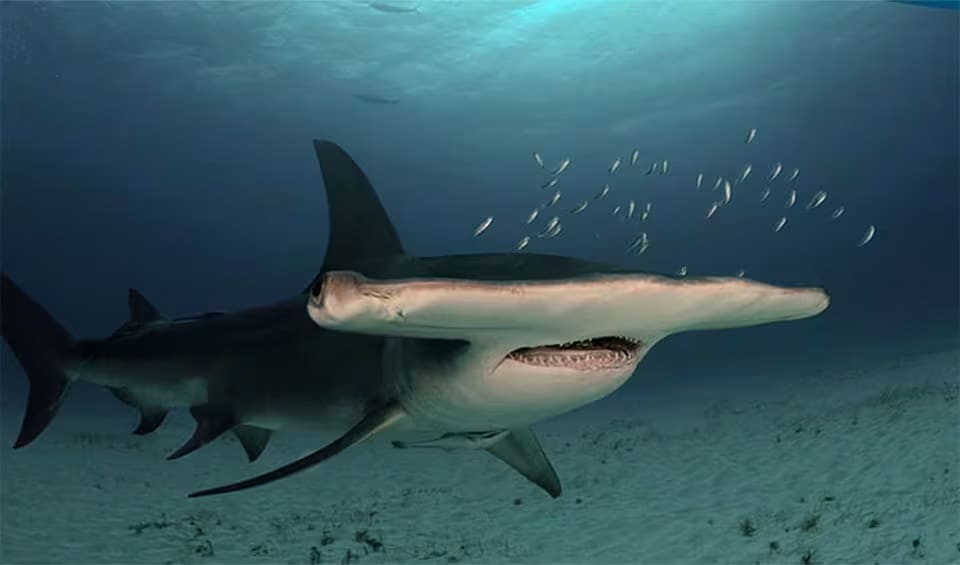Sphyrna – Hammerheads
Though they might look scary, they are generally not harmful to humans
This genus encompasses the fascinating group of sharks commonly known as hammerhead sharks, distinguished by their unique hammer-shaped heads called cephalofoils. This distinctive head shape, which looks like a flattened hammer, is not just for show; it provides these sharks with enhanced sensory capabilities and maneuverability.
Hammerhead sharks can be found in oceans around the world, predominantly in warmer waters along coastlines and continental shelves. Their unusual head structure provides a wide array of benefits. It spreads their sensory organs over a broader area, enhancing their ability to detect prey through electrical signals and vibrations in the water. This makes them exceptional hunters. The placement of their eyes at the ends of the cephalofoil allows for a nearly 360-degree field of vision, greatly enhancing their ability to spot predators and prey.
Hammerhead sharks exhibit some fascinating behaviors. One of the most notable is their schooling behavior; some species, like the scalloped hammerhead, gather in large schools during the day, sometimes numbering in the hundreds. These schools break up at night when the sharks go hunting. The reasons for this social behavior are still under study, but it’s believed to provide safety in numbers from predators and possibly enhance their breeding opportunities.
Diet-wise, hammerhead sharks are formidable predators. They feed on a variety of prey including fish, squid, octopus, and crustaceans. Larger species, like the great hammerhead, specialize in hunting stingrays, using their wide heads to pin them down on the ocean floor before eating them. The wide head also helps with digging prey out of the sand and detecting hidden creatures thanks to their electroreceptors.
Species in this genus
Scalloped hammerhead
Their skin actually darkens, just like a sunburn!
Great hammerhead
The biggest of all the hammerhead sharks, with a massive head that looks like a giant, flat hammer



